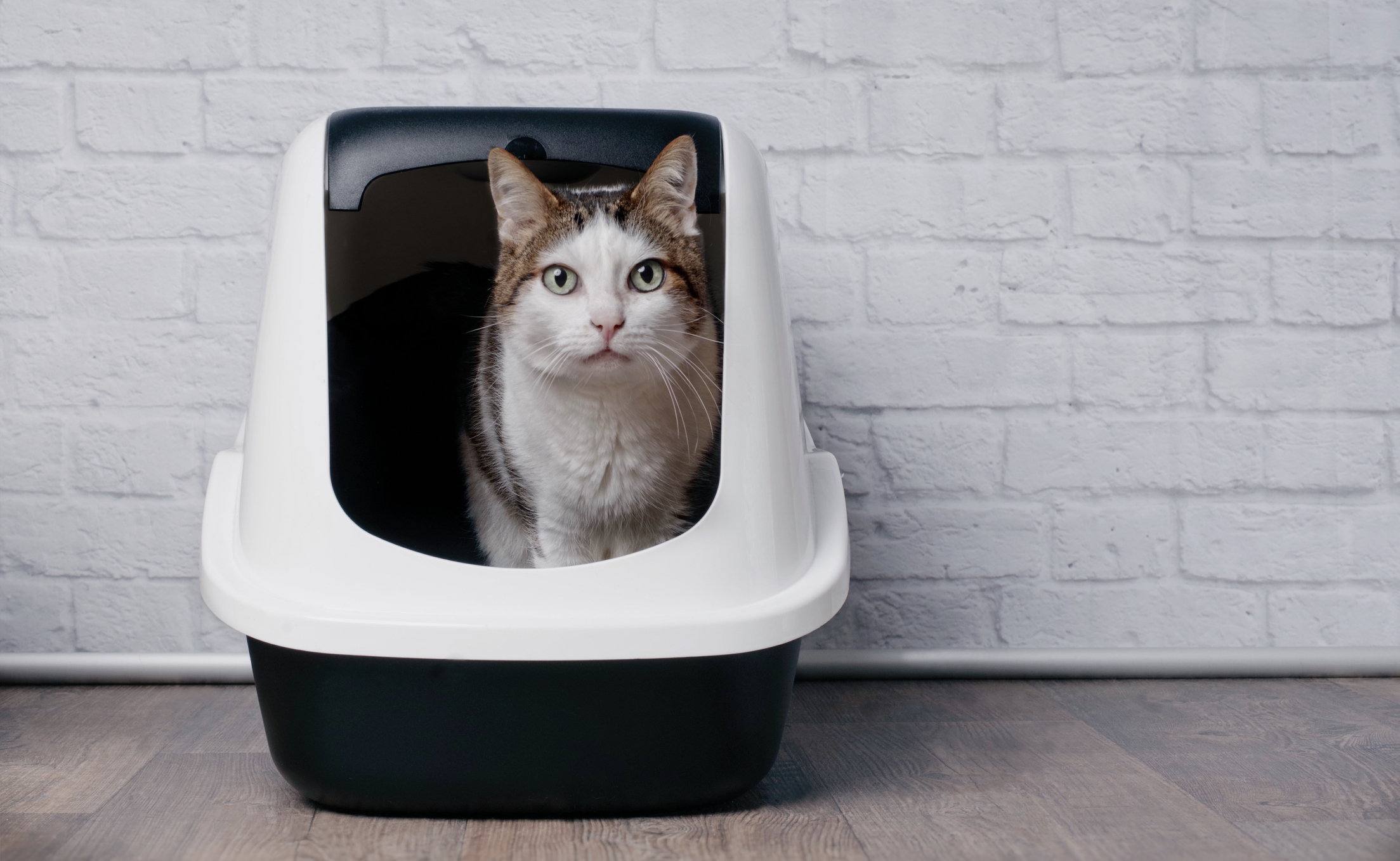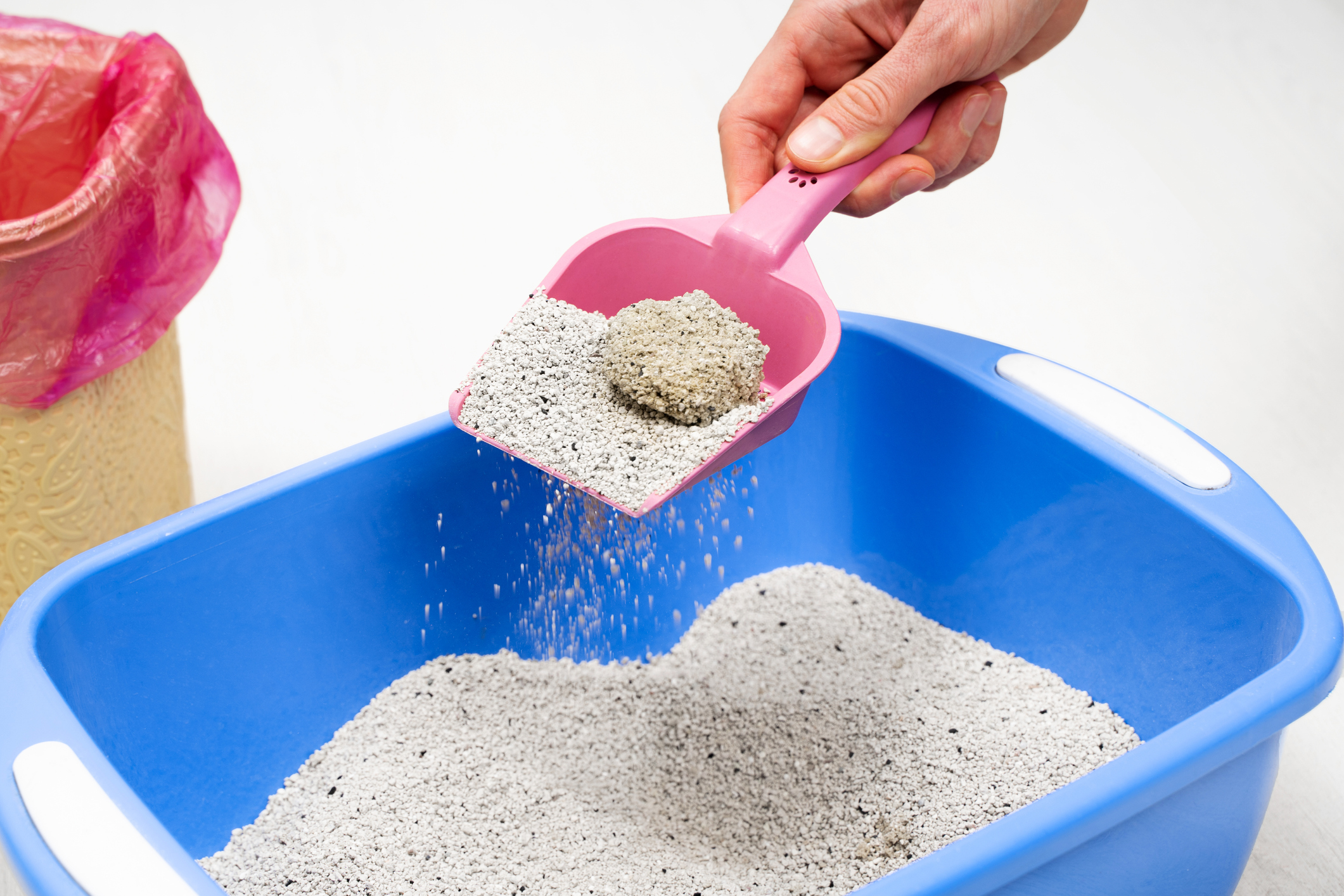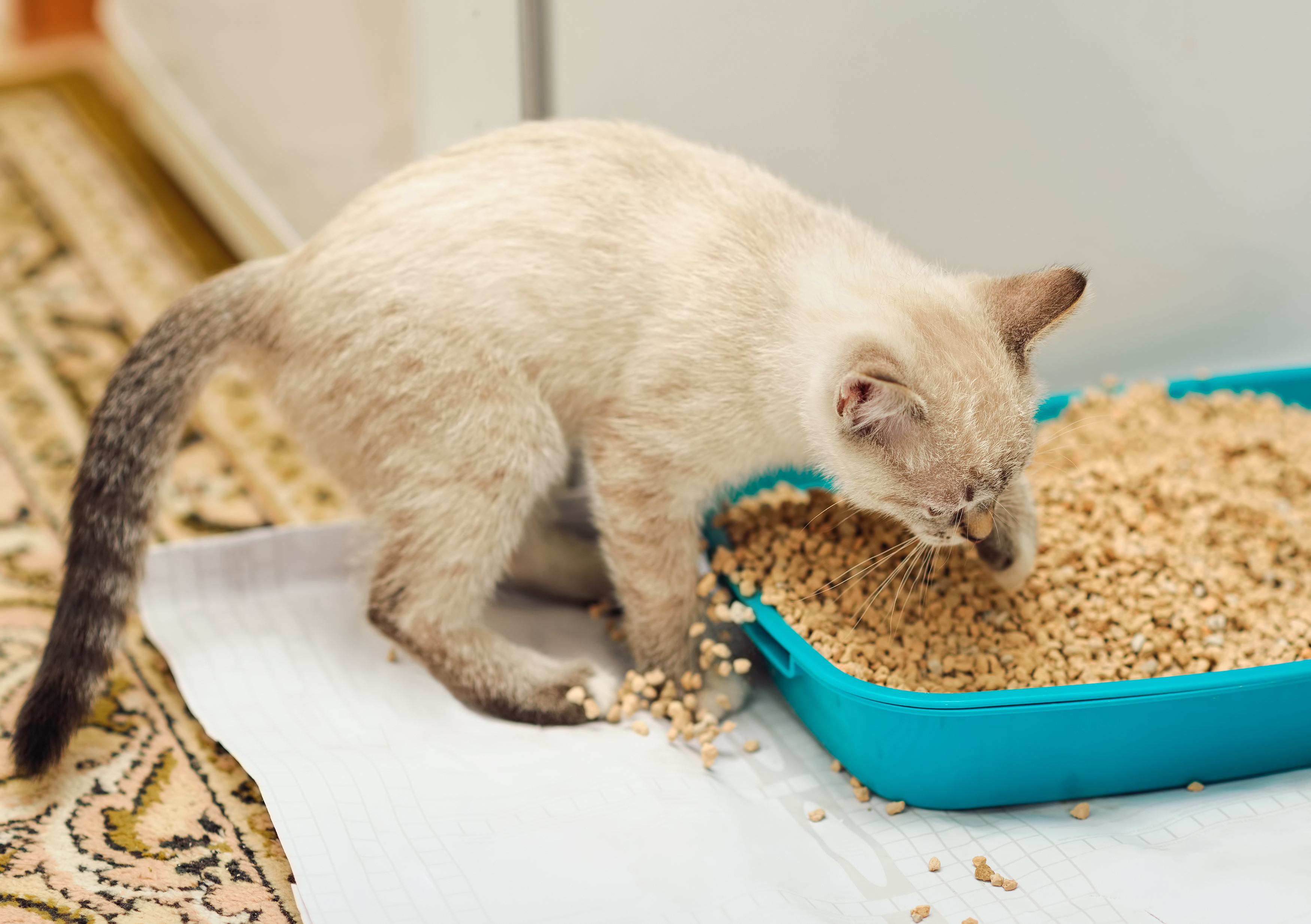The Ultimate Guide to Choosing the Purrfect Cat Litter
Doctor of Veterinary Medicine

While efforts are made to answer all questions as quickly as possible, if an immediate answer is required or if your pet is in need of urgent or emergency care, contact your pet's veterinarian immediately.
Doctor of Veterinary Medicine

You will receive an answer from Dr. Lindsay and our vet/tech team as soon as possible, usually the same day.
All answers are provided for informational or educational purposes only, and are intended to be a supplement to, and not a substitute for, the expertise and professional judgment of your pet's veterinarian.
It may be necessary to consult your pet's veterinarian regarding the applicability of any opinions or recommendations with respect to your pet's symptoms or medical condition.
CloseDoctor of Veterinary Medicine

An error has occurred, please reload the page and try again.
CloseWhile efforts are made to answer all questions as quickly as possible, if an immediate answer is required or if your pet is in need of urgent or emergency care, contact your pet's veterinarian immediately.
There is no answer related to your question

Are you looking for the best cat litter to prepare for a new cat or kitten - or hoping to make a change from a cat litter brand that’s no longer working for your household?
Whether you’re wondering if clumping is overrated or if your cat’s litter can ever be eco-friendly, there’s a litter out there for you.
Read on to narrow down the best litter to keep your cat-loving home fresh, clean, and odor-free.
Which Cat Litter Is Best for Odor Control?
The best cat litter will have your guests saying, “it doesn’t even smell like you have a cat in here!” Bonus points if you don’t need to scoop constantly to keep odors under control.
Clumping cat litter is usually made from clay, but natural cat litters, too, come in clumping varieties. Clumping litters lock in moisture, which sticks together in clumps that are easy to scoop. That way, you can remove clumps and top-off the box with fresh litter, potentially cleaning out the entire litter box less frequently.
Non-clumping cat litter absorbs moisture and odors, but tends to need replacing more frequently, as it’s not possible to only remove soiled portions of litter.
Scented cat litter can be great for covering up odors, but sensitive cats may refuse to use them if they have an overpowering scent.
Silica crystal cat litter is excellent for odor control because it absorbs moisture nearly instantly. Urine is absorbed, instead of solidified, so you only have to stir and scoop the poop, which is essentially mummified by the crystals. So, you can get away with less frequent scooping and still keep your home odor-free.
When it comes to odor control, pine litter deserves an honorable mention. It’s natural and biodegradable, and though it’s non-clumping, the pine pellets dissolve on contact with moisture, leaving behind naturally fragrant sawdust.

Clumping cat litter forms easy-to-scoop clumps upon contact with moisture.
Which Cat Litter Options Are Low-Dust and Low-Tracking?
Though clumping cat litters can be great for odor control and cleanup, they do have a few drawbacks, namely tracking and dust production.
When your cat does their business, and their litter is dusty, they can kick up clouds of dust into the air as they dig. For cats and humans with respiratory sensitivity, litters that create dust can cause coughing, sneezing, and potentially, an asthma attack.
Clumping cat litters tend to stick to the bottom of the box, as well as to your cat’s toes, resulting in tracking around the outside of the litter box.
Silica crystal cat litter, too, is known for creating dust, especially as it breaks down into smaller particles with use. Dust and tracking can vary between brands and between cats, as some are more enthusiastic diggers than others.
If you’re having issues with dust, have a family member (either two-legged or four-legged) with respiratory issues, or have noticed tracking around your home, look for low-dust litter varieties, or consider a non-clumping clay, pine, recycled paper, or plant-based litter.
Which Litter is Eco-Friendly?
When it comes to eco-friendliness, there are two factors to consider: how a cat litter is produced and how it breaks down after you’ve disposed of old litter.
Clay and silica crystal cat litters are produced with non-renewable materials sourced through a process called strip-mining. Strip-mining damages landscapes, causes erosion, and releases dust and contaminants into the environment.
What’s more, clay and silica crystal cat litters are not biodegradable. After used clay or silica litter has been disposed of in a landfill, it will remain there for years to come.
If possible, choose cat litters made from plant-based materials like corn, recycled paper, wheat, and pine, all of which are biodegradable and sustainably sourced.
Conversely, though, if you’ve tried other litters but simply get the best odor management with clay or silica, you may not need to clean it as often, and you may need less of it to keep your litter box smelling fresh. While it’s always better to choose eco-friendly products, sometimes you have to choose what makes the most sense for your household.
To further shrink your cat’s environmental pawprint, avoid using plastic bags when cleaning and disposing of litter. You can use paper lunch sacks or grocery bags to collect clumps or change out a soiled litter box.
Which Cat Litter is Best for Kittens?

Kittens have a tendency to ingest small amounts of litter, sometimes out of curiosity, and at other times, by accident, simply because their short legs mean they’re close to the bottom of the litter box.
While all varieties of cat litter are generally harmless if ingested in small amounts, it’s best to stick to an unscented, non-toxic, non-clumping variety like plant-based corn, pine, or recycled paper litter.
Why Are Some Cats Picky About Litter?
When switching to a new litter, or picking a litter for your new cat, keep in mind that they might revolt. A picky cat might refuse to use their litter, go on a poop strike, and eventually find a soft surface in your home to use instead.
In general, picky cats seem to prefer finely textured litter. It may be easiest to dig, make the least noise, and it may feel best on their paws.
Pellets, which are usually made up of recycled newspaper or pressed pine sawdust, can be noisy and more difficult to dig. If you’re switching a finicky cat to pellets, consider setting aside some of their old litter to mix with the new.
Choosing The Best Cat Litter For Your Household
When narrowing down your choices, keep in mind how many cats you have, how often you’d prefer to scoop and refresh the litterbox, and whether you or your family members are sensitive to dust or added scents. Affordability matters, too, and the ticket price isn’t the end-all, be-all if the pricier option lasts much longer between litter box cleanouts.
Ready to find the best cat litter?
Shop and save on cat litter today at PetMeds.com
VISION
Every pet deserves to live a long, happy, healthy life.
 Swipe
Swipe



















